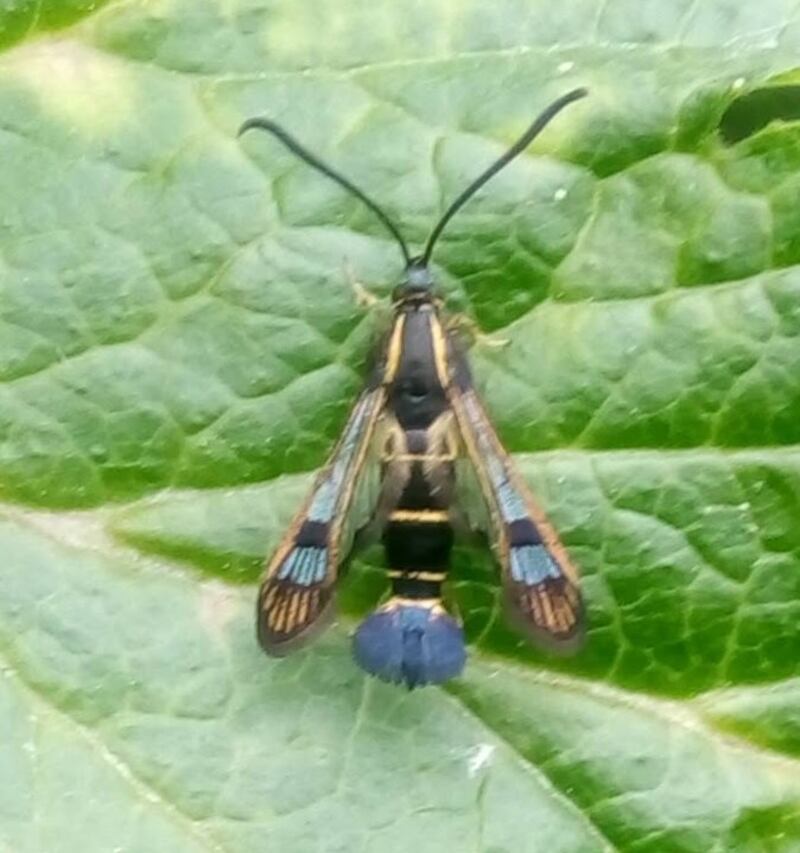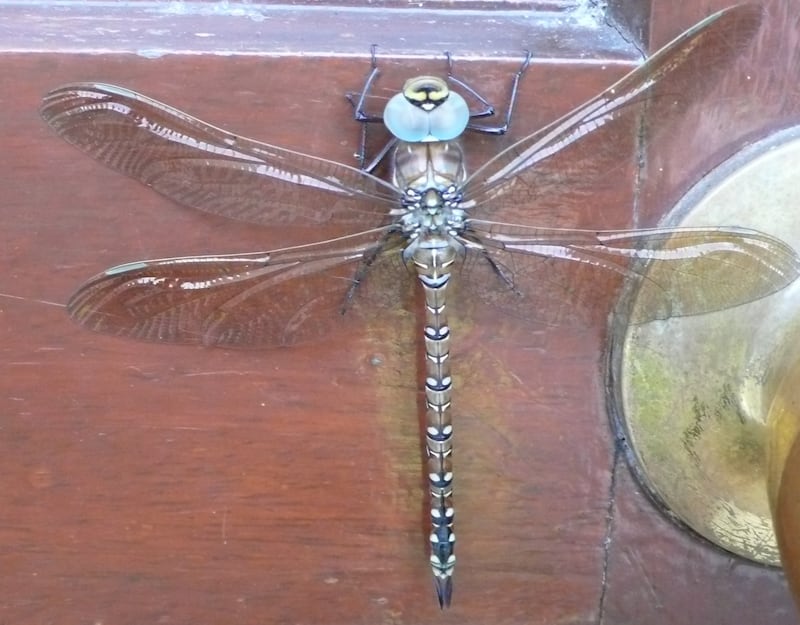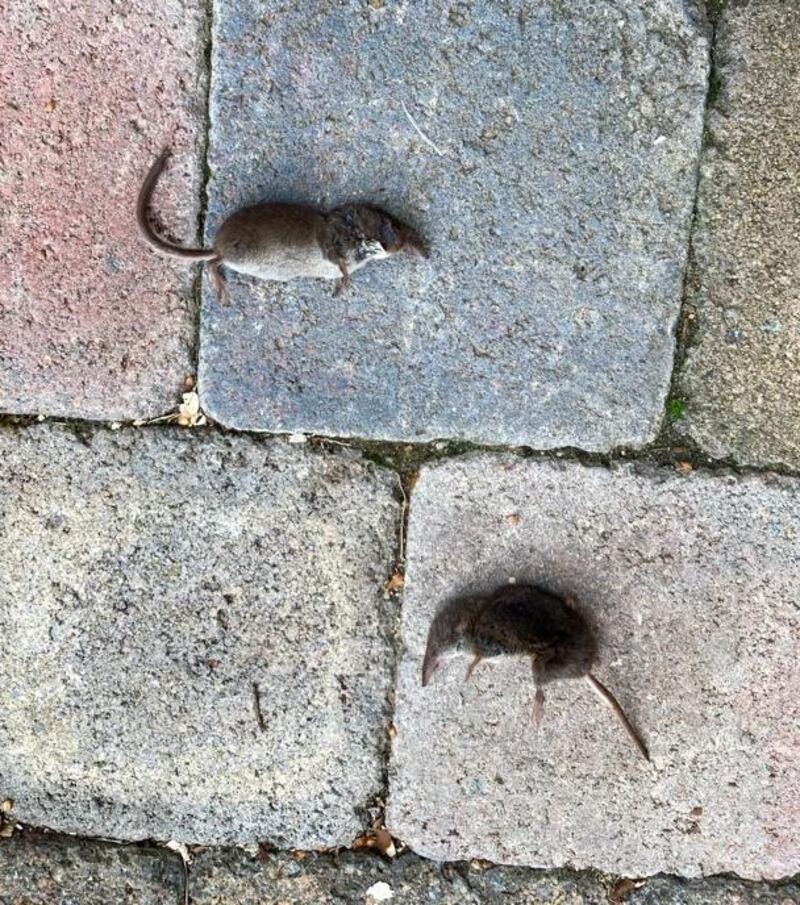Can you identify this insect? It is photographed perched on a lemon verbena plant in our garden. Feargal O’Neill, Co Galway
I can: it is an Ichneumon wasp – a parasitic insect that lays eggs in the caterpillars of various large moths. The emergent larvae eat the living caterpillar’s insides. The adults feed on the pollen and nectar of flowers.

I spotted this yellow-legged clearwing moth in the garden in July. This appears to me to be relatively scarce; is it more common than I am led to believe? John Smith, Co Kildare
It is the day-flying currant clearwing moth. A trick of the light makes its normally black “tail” appear blue. The National Biodiversity Data Centre has just 27 records in total for it. Its caterpillars feed internally in the stems of currant bushes.
READ MORE

I saw this creature perched on our backdoor. Is it by any chance a hairy dragonfly? Our house is about 250m from Tuam Town Park, where large grass areas have been “rewilded” (not cut) by Galway County Council. Willi Kiefel
It is a dragonfly, not a hairy one but a recently emerged female common hawker, Aeshna juncea. It spent three years as a larval wingless juvenile in a bog pool and will return there when mated, to lay eggs. Good for the council to have eased off on cutting grassy areas – other insects will thrive, but this is an insect of bogs and moorlands.
Can you help me identify this most unusual caterpillar I found while gardening. It appears to have four eyes and a snout! I have never encountered anything like this before. Bernadette O’Sullivan, Co Kerry
It is the caterpillar of the green and pink elephant hawkmoth. It is the caterpillar’s trunk-like snout that gives the moth its name. When alarmed the caterpillar withdraws its snout, swells up and sways menacingly from side to side like a mini snake.

Mary Maloney from Co Louth sent in this picture of two pygmy shrews, an early morning present from the neighbour’s cat, which doesn’t eat them as their potent scent glands make them taste horrible.
Have you a nature query, observation, or photo you would like t share with The Irish Times? Submit it, with a location, via our website www.irishtimes.com/eyeonnature















